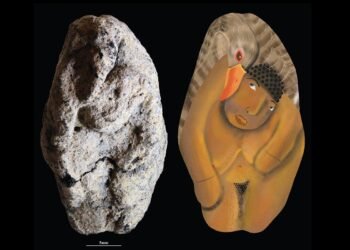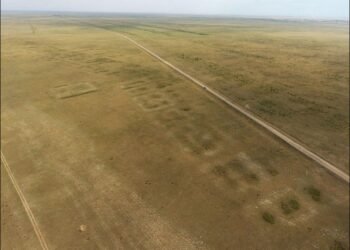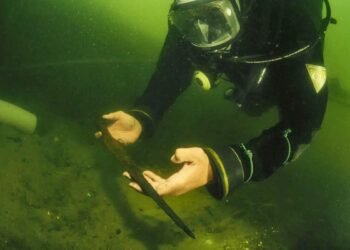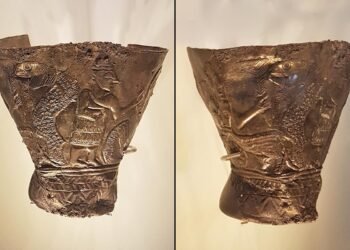A recent study suggests that Germanic warriors during the Roman era may have relied on carefully dosed stimulants to enhance their courage and physical endurance in battle.

Researchers identified hundreds of small, spoon-like objects, often found alongside war equipment at archaeological sites across Scandinavia, Germany, and Poland, dating between the 1st and 4th centuries CE.
These objects, ranging from 1.5 to 2.7 inches in length and featuring either a concave bowl or a flat disk, were typically attached to warriors’ belts. While they played no role in securing the belts, their proximity to weapons has led scholars to conclude that they likely served as tools for dispensing stimulant substances.
The study, led by Prof. Andrzej Kokowski and researchers from Maria Curie-Skłodowska University in Poland, categorized 241 such artifacts from 116 sites. The objects were consistently found in graves or marshes, areas associated with battlefields and sacrifices, further supporting the hypothesis of their use in warfare.

Prof. Kokowski noted, “It seems that the awareness of the effects of various types of natural preparations on the human body entailed knowledge of their occurrence, methods of application, and the desire to consciously use this wealth for medicinal and ritual purposes.”
The research team analyzed the availability of natural stimulants in the region and identified a wide array of substances potentially used by the Germanic peoples. These included opium poppies, hemp, henbane, belladonna, and hallucinogenic fungi. Such substances could have been consumed in powdered form or dissolved in alcohol, providing warriors with heightened aggression, reduced fear, and sustained endurance.
The study suggests that the use of these stimulants extended beyond battlefields. These substances may also have played a role in medicine and rituals, reflecting a sophisticated understanding of their effects. Historical records highlight the use of narcotics by armies throughout history, from the Red Army’s amphetamines in WWII to the Greek hoplites’ medicinal opium use.

Researchers also propose that an organized trade network existed to supply these substances, indicating the presence of a “narcotic economy” during the Roman period. The precise dosing facilitated by these spoons highlights the knowledge and discipline involved in their use. Improper doses of potent substances like belladonna or ergot fungus could have had catastrophic consequences, including hallucinations or death.
“These spoons were part of a warrior’s standard kit, enabling them to measure and consume stimulants in the heat of battle,” the authors write. The sheer volume of these artifacts attests to their prevalence and the importance of such practices in maintaining morale and physical readiness.
The researchers emphasize that the use of stimulants by Germanic tribes challenges long-held assumptions that these groups, often labeled as “barbarians” by their Roman counterparts, had limited access to narcotics beyond alcohol. This new evidence suggests a more complex picture of their cultural and medicinal practices.
The tools were not merely battlefield accessories but symbols of a deeper understanding of pharmacology, blending warfare, ritual, and trade into the fabric of these societies.
The findings are published in the journal Praehistorische Zeitschrift.























